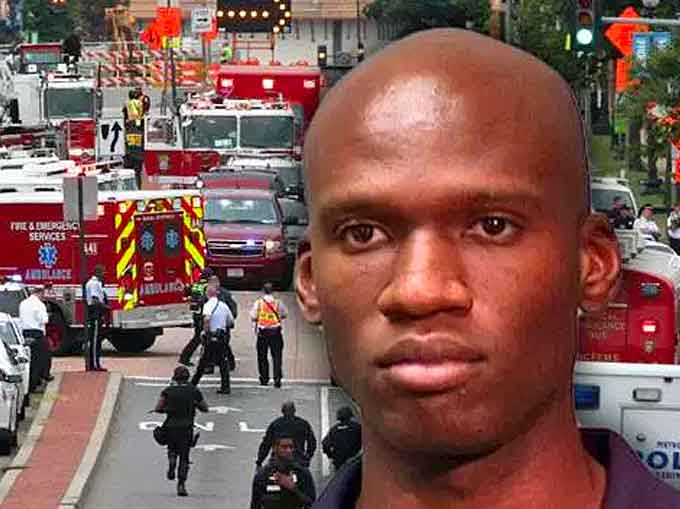
By Doug Haines, Owner and CEO of Haines Security Solutions
Modern architectural design in the past few years has gone from buildings with lots of cubby-hole offices, conferences, classrooms and shared space to wide-open spaces that cover an entire floor, or wing of a building with different areas reserved for different functions.
The idea being that shared space actually contributes to interaction between company members, classmates and fosters a sense of inventiveness, creativity and community.
I’m not sure I agree.
I do my best work when there are no distractions; other people getting coffee or gossiping around me.
I can focus on the task at hand but the newer generation is able to cope with multiple levels of information almost simultaneously so I guess grandpa needs to adapt.
One thing I do know is this open office concept provides a problem when it comes to the active shooter threat; there are no places to hide.
(Aaron Alexis marched through the Navy Yard going door to door with a sawed-off shotgun in his hand on Sept 16, 2013, fatally shooting 12 people and injured three others in a mass shooting at the headquarters of the Naval Sea Systems Command (NAVSEA) inside the Washington Navy Yard in Washington, D.C. It was the second-deadliest mass murder on a U.S. military base, behind only the 2009 Fort Hood shooting. Courtesy of the FBI and YouTube.)
Since we’ve been teaching people to RUN-HIDE-FIGHT, my question becomes haven’t we set them up for slaughter since we are not providing security protection in our design concepts beyond the “hardened” perimeter?
With all of the access control technologies available and procedures that the guards follow are we truly expecting a “dedicated” threat to be stopped at the perimeter?
The first thing we need to do is get away from the idea that security is simply a guard at the gate or in the lobby and a badge machine that people can swipe their cards at to get through.
Second we have to admit that in order to be truly effective security must be integrated into every layer of physical security and has to be ingrained in the corporate culture.
 Security is not an “app” that you add on.
Security is not an “app” that you add on.
Neither can it be a “tax” nor burden. If it is, it won’t be used.
For that reason I like to concentrate on designing the environment so that people can do what we want them to do because they really can commit “unwanted behaviors”.
With that in mind, here are four mitigation strategies that can be incorporated into inhabited space design before an active shooter event occurs.
Provide Alternative Escape Routes at All Cost
I’m not a firefighter and consequently have not attended any formal firefighter training, but I doubt if anywhere in their training, it says to tell people to stay in the building until they show up to save them.
We don’t do that for fire but we do that for active shooter incidents. Huh?
We could easily design buildings and rooms within so that there are always at least two evacuation routes.

For example this full-page infographic on fire safety which included examples of escape routes, courtesy of themapshack .com
We would need to make sure they’re opposite each other so the occupants don’t have to run in to the line-of-fire of the shooter.
This would allow people to escape the shooter, instead of hiding in the bathroom and waiting to be murdered or, at best, to fight to overwhelm the attacker.
Essentially, we’ve told and trained folks to wait and hope.
This paradigm shift would allow people to escape instead of waiting to be murdered by hiding, or at best, fighting to overwhelm the shooter.
Restrict Movement by Compartmentalizing Space
I believe we can compartmentalize transit spaces, such as hallways, stairwells, much in the same way as ships have bulkheads that compartmentalize the interiors of the ship in case of fire or flooding.
We could do the same with these transit spaces and make it so that once a “bad guy” is in this space we can seal him or her off so that there is no freedom of movement.
By restricting the freedom of movement haven’t we in essence prevented the threat from causing more victims?

Obviously, some technical expertise is needed and every building or inhabited space would need to be analyzed on its own merit and would probably require a different and specific solution, but the same basic principle would exist throughout.
We would also need to provide additional protection to the interior walls so that the perpetrator couldn’t “mouse-hole” his way out of the space.
In other words, limit the ability to shoot thru the drywall and go into another room. We would need to figure out what’s the best way to do that in any given situation.
There are ballistic resistant materials that could be used as the wall instead of dry-wall or as a covering to existing walls.
These products are already on the market, which we could and should use to isolate the “rat”.

Create Internally Safe-spaces
Create safe-spaces with-in classrooms, auditoriums, offices, labs, etc. by using wall coverings that are ballistic resistant.
Additionally, install ballistically rated doors instead of the standard hollow-core wooden ones.
The idea mentioned above about covering the entire length of a hallway to prevent “mouse-holing”, for instance, with ballistic material may become quite costly.
So, we could use ballistic resistant panels hung on rollers, similar to current mobile walls that are used in hotel meeting spaces to accommodate different size groups; i.e., lectures, conferences, receptions.
A teacher along with his/her students could pull them together and latch them from the inside, so that they cannot be opened except from the inside.
I believe there is a way to design these “quick fix safe-spaces” in such a way that a perpetrator would be very hard pressed to shoot through the cracks/seams where the panels fit together.
We could also add a fixed communications box on an existing wall so that communications between the victims and the response forces could occur as the situation develops.

Provide Ballistic Protection in the Form of Furniture
We may not have enough time to pull walls together to create space, so with in mind, we need to provide protection to people wherever they find themselves.
Ballistic materials are currently on the market that can be incorporated into furniture; counters, white boards, walls, doors, etc. that offer protection to occupants.
The use of ballistic resistant furniture could be placed in, hospital waiting rooms, houses of worship, school classrooms, government offices, or basically anywhere where large numbers of people gather.
After last year’s Ft Lauderdale attack, some airport gate seating incorporates this technology.
The natural tendency for a person involved directly in an active shooter event is to “duck and hide”, ballistic furniture may give them the few seconds they need to survive.

The active shooter threat is not going away.
While it is still very unlikely that you or the ones you care about will be involved in an active shooter event, it is possible, as these events are becoming more and more common place.
Even if we start today, it will take time before we change our mindset and find applicable solutions that most emergency planners can agree on and legislation catches up.
Until then, it’s up to us; i.e., administrators, architects, designers, emergency managers, engineers, facility managers, planners and security professional to do what we can to make people safe.
Unfortunately, there have been far too many terrorist attacks around-the-world – shouldn’t we have learned something from them?
About the Author:
Doug Haines is the owner and CEO of Haines Security Solutions (HSS) in Ventura, California. He’s widely respected and sought after for his subject matter expertise in developing building design strategies.

Whether lecturing in academia or at a security industry forum, he’s an impassioned speaker and likes sharing. He routinely contributes to security publications world-wide.
He was selected as the Security Industry Associations’ Sandra Jones Volunteer of the Year 2016 for helping shape the Associates of Applied Science Degree Program in Security Systems Technology at Mercer County Community College.
His company’s Risk Analysis methodology was cited as the Platinum GOVIES 2017 Award winner by Security Today.
Haines Security Solutions Physical Security Engineering Training and Certification Program is competing for an ‘ASTORS’ Award in the Best Homeland Security Education Program Category 2017 by American Security Today.
(Learn More about Haines Security Physical Security Engineering Training and Certification Program (PSET&C), courtesy of Haines Security and YouTube.)















